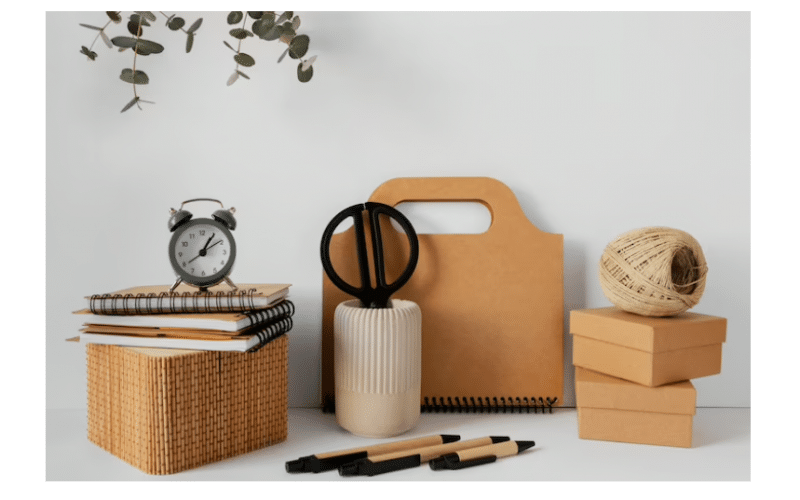What Are Durable Goods?
Durable goods are items that have a lifespan that is longer than two or three years, demonstrating toughness and endurance. These products are designed to provide dependable utility and durability over an extended period while delivering sustained economic value.
Durable goods have a lengthy shelf life, so manufacturers frequently store them in warehouses rather than increasing production to keep up with demand. Although there is occasionally an increased demand for these products, it is uncommon, as most consumers try to use them for as long as possible before they become worthless.
Customers can, for instance, replace a component to prolong the life of a motorcycle if repair is not possible, or they can use a washing machine for up to 10 years after its reference lifespan of, say seven years. Durable goods’ purchase costs consequently tend to be higher, which is correlated with consumer spending.
Note that:
- Products that give customers the chance to benefit from them for a very long time are referred to as durable goods.
- These products are expected to last for at least two years. People attempt to replace or fix them to increase their shelf life by a few years.
- Consumer durables also include capital goods, which are primarily used by businesses as opposed to households.
- Around 70% of the imports and exports in many Organization for Economic Cooperation and Development (OECD) nations are thought to be driven by demand for this category of goods.
How Durable Goods Work
Unlike capital goods, which are the tangible assets a business uses to produce goods and services for customers, durable goods are one-time purchases that last for at least two years, while capital goods are fixed assets like building structures, industrial equipment, vehicles, and tools.
These items, such as vehicles, furniture, beds, kitchen appliances, etc., are primarily used by households. Additionally, some semi-durable products have a shorter lifespan, such as clothing, jewelry, and shoes.
Therefore, consumer durable goods are made with the idea that a single purchase will be useful for a longer period of time and are therefore constructed to have a longer shelf life.
Lastly, these unique commodities offer utility over extended periods and are crucial in economics and consumer spending analysis.
Types of Durable Goods
Durables can be divided into two groups that include:
#1. Consumer durable goods:
The items in this category are those that people or households purchase in the hopes that they will last them for many years and prevent them from having to do so anytime soon. Automobiles, housewares, gadgets, books, tables, furniture, and other items are examples.
#2. Business durable goods:
These are the products that business owners require for their organizations’ efficient and effective operation. Particular types of businesses require certain machinery and equipment to get off the ground.
Engines, metalworking equipment, and electrical transmission devices are examples of industrial equipment that allow specific business types to function. Trucks, cars, and vans are frequently required by businesses to transport the supplies required for manufacturing or to deliver goods to customers.
Additionally, business owners frequently require laptops, desktop computers, smartphones, and tablets to run their operations and monitor their success.
What Are Examples Of Durable Goods?
Products that are made to last a good number of years and are not quickly consumed or used up are considered durable goods. Durable goods include things like:
1. Appliances like stoves, washers, and refrigerators
2. Home furnishings like couches, mattresses, and dining tables
3. Electronics like smartphones, computers, and televisions
4. Automobiles, pickup trucks, and motorcycles
5. Equipment like hammers, saws, and drills
6. Equipment like engines, generators, and turbines
7. Business tools like bulldozers, excavators, and cranes
8. Sports equipment like tennis racquets, golf clubs, and bicycles
9. Musical equipment like guitars, pianos, and drums
10. Accessories like necklaces, bracelets, and watches.
These things can be utilized repeatedly without wearing out or needing to be replaced right away, so they are generally expected to last for a long time
Top 10 Consumer Durable Companies in World
Many businesses produce these brands, however, in this article, we’ll focus on the top ten, in no particular order, that do so.
#1. Apple:
Apple Inc. is a well-known manufacturer of consumer goods with a focus on online services, software, and electronics. The largest technology company, founded by Steve Jobs, has a market value of over $360 billion. Apple is renowned for its sleek, contemporary products, which are also of the highest caliber.
#2. Samsung:
Samsung, a South Korean multinational conglomerate, is known for its Galaxy series of products, including phones, refrigerators, televisions, and home appliances. With a focus on durability and technological advancements, Samsung has become a leading consumer durable company. Additionally, the company offers warranty services and assistance to its customers.
#3. Sony:
Sony, a Japanese multinational conglomerate, is a leading manufacturer of consumer and professional electronic products, as well as the largest video game console company and publisher. Additionally, with a focus on quality durable goods, Sony has evolved to meet the technological advancements of the world.
#4. IBM:
IBM, a leading consumer durable company, is a technology giant with headquarters in New York. Established in 1911 as the Computing-Tabulating-Recording Company (CTR), it has been producing and selling computer hardware and software since 1924.
Additionally, IBM has also developed computer chips for Microsoft Corporation and Microsoft Corporation’s Xbox 360. With over 35,000 patents, IBM has established itself as a giant in the computer chip, supercomputer, and supercomputer industries.
#5. LG:
LG, a South Korean multinational company, is a top consumer brand known for home and kitchen appliances, including LCD and LED monitors, microwave ovens, air conditioners, smartphones, refrigerators, washing machines, music players, and microwave ovens.
#6. Hitachi:
Hitachi offers a diverse range of business products, including power systems, IT, and electronics, as well as consumer appliances like refrigerators, microwaves, kitchen appliances, washing machines, air conditioners, and dehumidifiers.
#7. Toshiba:
Toshiba is a leading global consumer durable company, offering a diverse range of appliances like PCs, laptops, and air conditioners. With its technological prowess, it has become a household name and ranks among the top ten consumer durable companies.
#8. Intel:
Intel, the world’s largest microchip manufacturer, supplies microprocessors for companies like HP, Dell, Acer, and Lenovo. As a household name, Intel has made significant strides in consumer durables, earning a place among the top companies worldwide.
#9. Microsoft Corporation:
Microsoft, an American multinational electronics and software company, is a leading developer of personal computer software, primarily known for its Windows operating system. The company’s portfolio includes Microsoft Office Suites, Internet Explorer, and Edge web browsers. Located in Washington, the company is a top ten global company.
#10. Fujitsu:
Fujitsu is a multinational Japanese provider of IT hardware and services. According to revenue in 1921, it was the sixth-largest provider of IT services globally. Additionally, mobile phones, networking solutions, computer hardware, and software are just a few of the products it manufactures and distributes.
Why Are Durable Goods Important?
We’ll examine the precise reasons why product durability is crucial.
#1. They last long:
End users benefit from a product’s physical durability, which is especially advantageous for plastic products and storage containers. Animal feed or chemical mixtures may spill if they split or crack, costing money to replace the containers and their contents.
Additionally, tough and long-lasting materials are needed for roto molding processes, and safety products like plastic safety steps must withstand user weight, or else they are ineffective. The functionality of a product is frequently dependent on its durability.
#2. They are economical:
Durable goods cost more upfront, but they quickly pay for themselves over time. Products that are less expensive and durable are more likely to break frequently, increasing the cost of repair and replacement. Brand loyalty may be lost as a result of this. Therefore, it is better to build products with outstanding durability from the beginning.
#3. Durable goods are Environmentally Friendly
The longer a product lasts, the more time the environment has to recover the materials used to make it. For example, making storage plastics requires raw materials from rubber trees to obtain latex. To be sustainable, the structure must last as long as it takes for the trees to renew themselves, allowing the natural environment more time to recover before the cycle begins again. This sustainability is a significant reason for producing high-quality, durable products.
What Are Nondurable Goods?
Nondurable goods are consumer goods in an economic system that must be purchased repeatedly because they are either used up quickly (this is considered to be within three years) or consumed in one use. It is the direct opposite of durable goods.
What Are Four Examples Of Nondurable Goods?
Soft goods, or consumable goods, are other names for non-durable goods. Nondurable goods include, for example:
- Food
- Washing detergent and hand soap
- Paper goods, such as toilet paper,
- Clothing
What Are 10 Durable Goods?
Products that last three years or longer are considered consumer durables, also known as durable goods. These include goods like:
- Mobile homes,
- big and small appliances,
- furniture, carpets, and rugs,
- cars,
- rubber tires,
- lead-acid car batteries,
- boats,
- consumer electronics,
- sporting goods,
- home goods and fine jewelry are some of the items on this list.
Is A Car A Durable Good?
Durable goods are those that can be used repeatedly without being destroyed or consumed. Therefore, durable goods include cars, machinery of all kinds, and home appliances.
Differences Between Durable and Nondurable Goods
Consumer goods that last longer than three years and can be used frequently over time are considered durable. Durable goods include things like bikes and kitchen appliances. Nondurable goods, such as beverages, plastic-wrapped foods, or household cleaners, are typically used only once and consumed in less than three years.
Related Articles:
Can You Bring Snacks on a Plane: 2023 TSA Rules
INDUSTRIAL GOODS: Meaning, Characteristics, Types of Buyers
COST OF GOODS SOLD: Meaning, Examples & How to Calculate It






